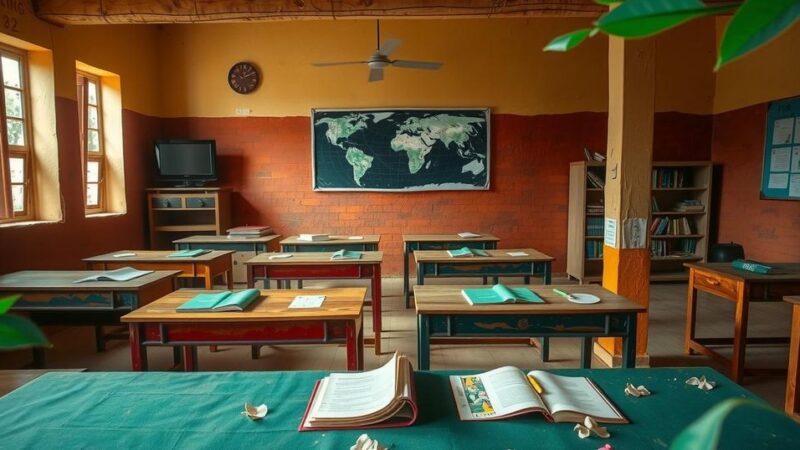In Lima, Peru, over 635,000 residents live without running water, relying on tanker trucks for supplies. Access is irregular and unsanitary, leading to health issues. Families receive far below the United Nations’ recommended water levels. The fundamental problems stem from poor urban planning and climate change, with stark disparities evident between wealthy and impoverished neighborhoods.
In the parched hills above Lima, Peru, thousands of residents lack access to running water, which is delivered by tanker truck to informal settlements. Lima, home to over 10 million people, is the second largest desert city worldwide after Cairo, surrounded by the Pacific Ocean, the Andes, and three rivers, but experiences very little rainfall. Notably, more than 635,000 individuals in Lima do not have running water, as reported by the National Institute of Statistics and Computer Science.
In San Juan de Miraflores, residents receive water from blue tanker trucks, which visit weekly at best, leaving their supplies in large drums on dusty streets. These storage containers pose significant health risks, as Catalina Naupa, a 59-year-old resident, describes experiencing stomach cramps and migraines due to unsanitary conditions. When the winter rains render the roads muddy and impassable, residents face prolonged shortages, prompting many to wash clothes only weekly or biweekly to conserve water.
According to Nicolas Reyes, of the city’s water utility, Sedapal, families receive approximately 260 gallons of water per week, equating to merely 30 liters (eight gallons) per person daily, greatly below the minimum 50-100 liters recommended by the United Nations. The situation is exacerbated by climate change, which is predicted by geographic expert Antonio Ioris to diminish water levels in the Andes and reduce river flows, further threatening the residents’ access.
Ioris emphasizes, however, that systemic issues, like inadequate urban planning and rural challenges leading to migration towards the city, are at the crux of the water access problem. In areas of San Juan de Miraflores, inaccessible by water trucks, residents pay an inflated cost for their water—reportedly six times what utility-connected households pay.
For those living near a notorious wall separating affluent neighborhoods from impoverished areas, the stark contrast of life is evident. Cristel Mejia, who operates a soup kitchen in the shadows of this barrier, notes that across the wall lies Santiago de Surco, a neighborhood where residents enjoy abundant drinking water, with consumption rates exceeding 200 liters per person daily. “Surco seems like another world,” Mejia reflects, underlining the stark disparities in water access within Lima.
In summary, the lack of running water in parts of Lima, particularly in impoverished areas such as San Juan de Miraflores, highlights severe health and social disparities. Despite being surrounded by water sources, residents face extreme shortages exacerbated by ineffective urban planning and climate change impacts. Furthermore, systemic inequities expose vulnerable populations to exorbitant costs and unsafe conditions, emphasizing the urgent need for improved access to clean water and sanitation in urban areas.
Original Source: homenewshere.com






